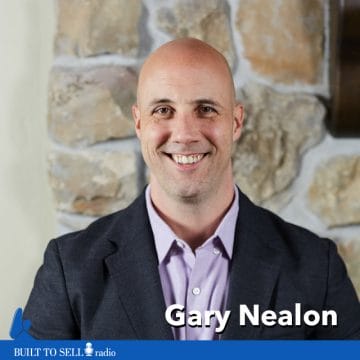About this episode
Gary Nealon started selling ready-to-assemble kitchen cabinets under the RTA Cabinet Store brand. It was around the time HGTV was taking off on a steady diet of home improvement shows. Nealon was contacted by one of the show’s producers who had a last-minute request for a shoot where they needed kitchen cabinets. Nealon scrambled his team and delivered.
That experience led Nealon to become the go-to supplier of kitchen cabinets for home renovation television. TV was just one of the many tactics Nealon relied on to grow RTA to $40 million in annual sales.
Struggling to find the time to continue to dedicate to marketing, Nealon decided to sell and quickly got an offer of around $2 million, which Nealon thought was low despite his thin margins. He decided to change the way he positioned the company in the eyes of acquirers to try and jack up his value. He made three modifications and was able to quadruple his selling price:
- Position the company in the mind of the buyer: Instead of positioning the business as a simple drop shipper of kitchen cabinets, he emphasized the breadth of the company he had built, including the infrastructure, SEO juice, brand, technology, and the team he had recruited.
- Forecast: Nealon created a five-year forecast for the business, showing suitors where the company would be in the future and how much more value acquirers stood to gain.
- Bundle and Trademark technology: Nealon also bundled the propriety technology he had created (e.g., shopping cart and shipping applications) and rolled them into the deal. He made the case that an acquirer could leverage those apps when selling anything online.
Nealon got six offers, each with a different combination of cash up front and future consideration. His final agreement was for 90% of his value in cash at closing, with 10% of his proceeds being rolled into the acquiring firm.
There’s lots more to love about Nealon’s story, including:
- How to ferret out a competitor posing as an acquirer.
- How to winnow down the scope of your non-compete.
- A definition of a “soft offer” and how to convert it into a firm LOI.
- The secret to getting your product placed on TV for free.
- The one thing Nealon wished he’d done differently.
Nealon’s acquirer found RTA irresistible because they had figured out the formula for selling expensive products online. The strategic acquirer had other brands they wanted to sell online and figured they could graft Nealon’s methodology onto their entire portfolio of products. We’ll help you pinpoint your likely strategic acquirers using a tool called The Short List Builder, which is the highlight of module 11 within The Value Builder System™ — get started by completing the Value Builder questionnaire.
Check out our article on Want To Jack Up Your Company’s Value?

About Our Guest
Gary Nealon is a serial entrepreneur that has bought and sold over a dozen companies in the past 5 years. His largest exit was a $40/mill a year e-commerce business that he sold two years ago. Since then, Gary has been coaching other e-commerce businesses on how to scale and has helped over 100 companies scale from 6-7 figures up to 7-8 figures. In the past 6 months, Gary and his business partner have been acquiring pet brands and now have 4 brands under their portfolio.


